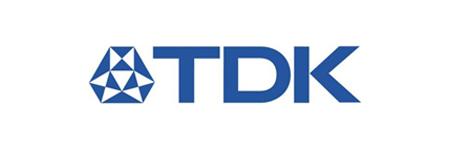They fight to the end Qualcomm
They fight to the end Qualcomm
In the entire mobile communications industry, no one can avoid Qualcomm.
From communications patents, to mobile SoC, to baseband, the chip giant has a firm grip on the lifeblood of every mobile phone manufacturer.
But now, in the automotive circle, the car companies also suffer from "Qualcomm dependence disease". One of the most representative is Qualcomm's success in the automotive intelligent cockpit business.
Up to now, except for a few car companies such as Tesla, most of the car companies have adopted Qualcomm's cockpit chips. According to data statistics, Qualcomm cockpit chips have won more than 50% of the orders in the auto market. The Snapdragon 8155, for example, has almost a monopoly in the smart cockpit of cars, and even after years of launch, most flagship models still use the chip.
Qualcomm's penetration into the cockpit chip space dates back to 2016. Before that, the smart cockpit SoC chip market was almost owned by NXP's i. The mx series is a complete monopoly, but with NXP's inability to follow up the advanced manufacturing process, i. The era of mx chips is coming to an end.
At this time, Qualcomm was keenly aware that the computing power of the traditional fuel vehicle chip configuration was poor, which could not support the central brain of the intelligent car, and decisively proposed the logic of using SoC chip to design the MCU chip. In addition, based on the judgment that the demand space for smartphone SoC is gradually peaked, Qualcomm began to stride into the field of car smart cockpit.
In fact, as early as 2014, Qualcomm released a generation of 28nm 620A chips, but at that time, smart cars were in the early stage, and most cars still lack multi-screen interaction and car networking functions, resulting in insufficient demand for smart cockpit chips.
Until 2016, Qualcomm officially released 820A, which attracted a series of manufacturers such as Volkswagen, Land Rover, Xiaopeng and Nio to adopt. Until today, it is still active in the best-selling models of various brands, such as Audi A4L, NIO ES 8, Ideal ONE, Xiaopeng P7, etc.
In 2019, Qualcomm released the third generation of smart cockpit chip 8155, using the global * 7nm process, was called "car standard chip ceiling", once became a yardstick to measure the level of a smart car technology. The flagship models of the brand with Qualcomm 8155 as the core selling point, was held on the altar.
In 2021, Qualcomm again released the fourth generation smart cockpit chip product ——SA8295P, which is fully upgraded to the Snapdragon 8295, which has been widely available.
Snapdragon 8295 has moved from 7nm to 5nm. In terms of parameters, the new chip mainly improves high performance computing, AI processing and other aspects. The overall performance of GPU improves by twice, the 3D rendering performance is improved by three times, and the NPU computing power reaches 30 TOPS. The Snapdragon 8295 has also added features such as integrated electronic rearview mirrors, computer vision (rear, looking around), passenger monitoring, and information security, and a chip to connect to 11 screens. At present, the chip has been started in mass production in cars.
At present, the Qualcomm smart cockpit chip follows the advantages of the smartphone chip. Since the launch of the Snapdragon 620A in 2014, Qualcomm has released four generations of smart cockpit chips, and the chip manufacturing process has been upgraded from 28nm to 5nm. Meanwhile, it has firmly occupied the core position of the smart cockpit chip market in this process.
From the current market point of view, in the field of intelligent cockpit, considering the product maturity, mass production capacity, the number of carrying models and other aspects, no enterprise has the overall strength to compete with Qualcomm.
But recently, Mediatek, Nvidia, Samsung and other manufacturers seem to be trying to arm wrestle with Qualcomm in the cockpit chip space.
Mediatek joined hands with Nvidia to attack the Qualcomm hinterland
Mediatek and Qualcomm have always been rivals in mobile phone chips. In the field of automotive chips, Qualcomm successfully replicated the success in the mobile phone industry, in the field of intelligent cockpit chips, holding the new throne.
Qualcomm's success has also attracted many competitors, including Mediatek.
On May 29, Nvidia and Mediatek announced a complete AI smart cockpit solution for software-defined vehicles. Through this partnership, Mediatek will develop an automotive SoC that integrates Nvidia GPU pellets (chiplet), equipped with Nvidia AI and graphics computing IP, which supports interconnection technology for smooth and high-speed interconnection between pellets.
Mediatek's smart cockpit solutions will run NVIDIA DRIVE OS, DRIVE IX, CUDA and TensorRT software technologies to provide a full range of AI smart cockpit functions, including advanced graphics computing, artificial intelligence, functional security and information security.
John Huang, founder and CEO of Nvidia, said: " AI and accelerated computing are driving the transformation of the entire automotive industry. The combination of MediaTek SoC with NVIDIA GPU and AI software technology will bring new user experience, higher security and innovative connectivity services to all automotive segments from entry level to luxury level.”
The two chip "old guns" are likely to break qualcomm Snapdragon 8155's monopoly in the cockpit chip field. A SoC partnership between Mediatek and Nvidia is expected to be available by the end of 2025 and put into mass production in 2026-2027.
Looking back on the development history, we can see that it is not too late for Mediatek to layout automotive chips. In 2016, Mediatek began to develop on-board chips. In 2018, Mediatek launched a MT2712 chip for the smart cockpit, targeting qualcomm, Qualcomm's second-generation 820A chip.
Unfortunately, the specification of the MT2712 chip is poor. The 6-core chip with ARM architecture uses the older 28nm process, which is one level different from the 14nm process of Qualcomm's 820A. However, under the lack of the cockpit at that time, MT2712 was recognized by Volkswagen, Hyundai, Audi and other car companies with its "good" performance, and successively carried the middle and low-end models of the brand.
By 2019, qualcomm's third generation 8155 chip "born", in order to "block" qualcomm, mediatek in the same year also released the corresponding intelligent cockpit chip MT8666, the chip using 12nm process, support VOS virtual machine, instrument, control and passenger three screen display, and has 3 road 4 Lane MIPI CSI, which is 12 camera input, and support double microphone noise elimination, track tracking, voice recognition support is high.
Compared to Qualcomm's Snapdragon 8155 chip, Mediatek's MT8666 focuses more on CPU performance, using a design of four Cortex-A73 large cores and four Cortex-A53 small cores. However, there is still a large gap between the 8155 in the process, calculation power and other parameters.
In April this year, Mediatek also officially released a new and integrated automotive solution, the Dimensity Auto automotive platform, which is equivalent to mediatek's comprehensive review of its own automotive business.
To put it simply, the Dimensity Auto automotive platform inherits MediaTek's expertise in mobile computing, high-speed connectivity, multimedia entertainment and other fields, as well as the extensive Android ecosystem. The business of this automotive platform is also highly overlapping with Qualcomm's automotive platform business, which has both cockpit chips and digital base (interconnection solution).
From the perspective of the whole development process, Mediatek has long been optimistic about and entered the intelligent car market, and its first-mover advantage in time has also made mediatek achieve good results. It is reported that Mediatek has shipped more than 15 million units in the smart cockpit and Internet of vehicles.
Combined with Nvidia's core expertise in AI, cloud, graphics and software, as well as Nvidia ADAS solutions, it is believed that Mediatek will further strengthen the Dimensity Auto Breguet automotive platform.
Mediatek's entry in the automotive field has been later than Qualcomm, and the cooperation with Nvidia is undoubtedly the blessing of Mediatek *. Although it is difficult to break Qualcomm's "monopoly" pattern in the short term, the two chip giants still have a high probability of becoming a "disruptor" in the cockpit chip field in the future.
Nvidia entered the automotive chip market earlier than Mediatech and has been continuously increasing its automotive business.
But previously focused on autonomous driving, Nvidia has continued to invest in research and development to launch a range of competitive autonomous driving products, such as DRIVE PX platforms, DRIVE Xavier chips and DRIVE AGX Orin platforms.
In September, Nvidia released a new generation of autonomous driving chip, Thor, with the 2000 TOPS, which is scheduled to start mass production in 2024 to grab market share.
In addition, Nvidia also has a system-level chip NVIDIA DRIVE Orin™ SoC, a centralized in-car computing platform, and a DRIVE Hyperion developer suite. As a veteran player in the automotive chip industry, Nvidia has rich technology reserves and a stable market share.
According to Q12023, Nvidia reported revenue of $296 million, up 114.5% year on year; Huang has said repeatedly: " Automotive is becoming a technology industry and is expected to be our next $1 billion business.”
Now pull diaTek for research and development, in Huang's words, is to combine the advantages of both sides, strengthen the software strength. From autonomous driving to the smart cockpit, Nvidia's ambitions in the automotive space are self-evident.
Smart cockpit SoC market, Samsung accelerated the entry
Samsung Electronics has also joined the market for smart cockpit SoC chips in the past two years.
Samsung Electronics has announced that it will work closely with Hyundai Motor to supply Exynos Auto V920, a new automotive chip, and the two companies are strengthening technical cooperation in order to launch their next-generation automotive infotainment (IVI) system in 2025.
Samsung Electronics has previously offered Hyundai a variety of automotive semiconductor products, including image sensors, but the Exynos Auto V920 is the first time Samsung Electronics has partnered with Hyundai Motor to develop an application processor (AP) chip that controls automotive systems like the human brain.
According to the report, the Exynos Auto V920 chip, the third generation car processor developed by Samsung Electronics for IVI system, will power the next generation IVI system, support six high-pixel displays and 12 camera sensors, using high-performance, low power consumption LPDDR5 memory capacity. At the same time, the upgrade will enable the V920 to support enhanced driver monitoring features to better detect the driver's status and quickly assess the surroundings to provide a safer driving environment.
Samsung said it will work closely with Hyundai to begin supplying advanced automotive chips as early as 2025.
Previously, Samsung Electronics announced in November 2021 that it would offer Volkswagen the Exynos Auto V7 with the IVI system "Automotive Application Server 3.1" developed by LG Electronics. In September of that year, Samsung said it was also making the next generation of hardware chips (HW 4.0) for Tesla's fully autonomous cars.
In addition, Samsung Electronics has also provided Audi with the smart cockpit master control chip Exynos Auto 8890 processor chip and Exynos Auto V9. According to the introduction, the overall performance of Samsung V9 processor and Qualcomm SA8155P can basically level, weaker than SA8195P, Samsung 8890 performance is weaker than Qualcomm SA8155P.
Entering the era of intelligent cars, the "escalation war" of intelligent cockpit SoC is becoming more and more intense.
At present, the competition in the smart cockpit chip market has been extremely fierce. There are not only traditional auto chip manufacturers such as NXP, Renesas and ST, but also consumer electronics chip giants such as Huawei, Qualcomm, Samsung, Samsung, Intel and Mediatek have joined the battle. At the same time, a large number of start-up companies such as Horizon, Core Technology and Core Engine Technology have joined. However, the smart cockpit chip market has a fast chip iteration, short life cycle and low shipments, which makes it difficult to spread the research and development costs, which is a high-threshold chip field.
From the perspective of the current supply structure, Qualcomm Copy's success in consumer electronics chips also has an advantage in the field of intelligent cockpit chips. The reason why Qualcomm can succeed in the field of intelligent cockpit chips is that the technical requirements of car standard chips and mobile phone chips are highly similar, and it can easily transplant the mobile phone chip technology to the on-board chip. So we see Qualcomm's car chip update iteration speed is very fast, to other chip enterprises formed a dimension reduction blow.
On the other hand, Qualcomm's chips have been polished by the era of smart phones, and have been compatible with mainstream cockpit systems such as QNX, CarPlay, and Android Auto, while car companies have also learned from smart phones, and updated the system to car owners through OTA, just like smart phones.
At the same time, Qualcomm also has strong baseband, radio frequency and other chips, which can provide a basket of solutions for car companies, which are the strengths of Qualcomm chips, so in the era of intelligent cars, it is difficult for other chip manufacturers to be so complete.
—— From the perspective of the cooperation plan announced by Mediatek and Nvidia, the two sides will fully enter the fields of intelligent cockpit chip, vehicle gauge SoC and so on, which is equivalent to directly entering the hinterland of Qualcomm.
In the short term, mediatek, Samsung and other manufacturers may also be more difficult to bring a substantial impact on Qualcomm. But in the long run, the friction in the smart cockpit chip industry will certainly intensify and lead to a new round of technology.
In addition, in the past, 90% of the chips in the domestic auto industry came from overseas suppliers. International giants have a deeper technology accumulation compared with domestic enterprises. China, as the automotive chip market, has officially opened the moment of competition, and domestic enterprises still need to work hard to get more seats in the high-end chip field.
Outside the cockpit chip, Qualcomm's new "abacus"
The cockpit chips are one of Qualcomm's leverage in the automotive chip market, but not its full ambition. In the last two years, as the throne of smart cockpit chips becomes more stable, Qualcomm has also begun to expand its tentacles into other fields, including autonomous driving SoC and autonomous driving design platform.
Recently, Qualcomm held the Automotive Technology and Cooperation Summit, and the automotive business team shared the latest developments of Snapdragon digital chassis. Qualcomm is advancing from the field of intelligent cockpit chip to the field of intelligent driving, showing its autonomous driving chip roadmap for the first time in China.
Domestic car companies choose autonomous driving chips, concentrated in Nvidia Orin, Intel Mobileye, Horizon, Black Sesame and other companies.
In the face of this situation, if Qualcomm wants to open up the market, the first thing is to eat the market of other enterprises. Therefore, in addition to continue to push autopilot chip, qualcomm chose the cockpit + autopilot chip "two" capsule integrated chip scheme, continue to play the advantages of cockpit chip, with "two" product strategy to avoid rivals, with scalability, low cost advantage or will form differentiation competition with other rivals.
The integrated chip is considered the last piece of the puzzle to realize the overall evolution of the central architecture. In the field of integrated chips, Qualcomm has explored a new model for the autonomous driving chip industry to help car companies reduce costs, or become the future advantage of integrated chips.
In January 2022, the second generation of Ride chip was released, using 4 nm process and is expected to get on the car in 2024. In January 2023, Qualcomm released the second generation of Ride, which can be used in the interior cockpit and the scalable series of assisted driving. Mass production is also expected to begin in 2024.
In the same 2024 mass production, and the same cabin integration, Nvidia and Qualcomm simultaneously chose the same route to enter each other's track.
The Qualcomm team is currently building a new ADAS portfolio, including the scalable Snapdragon Ride SoC portfolio, Snapdragon Ride Vision SoC and software stack portfolio. If these product combination for a series of series, so in the future car will be more intelligent, as a user car experience will increase significantly, and the product combination will also promote other chip enterprises of science and technology progress, at the same time if the technology series, also can bring great influence for the whole car intelligent propulsion.
However, the industry insider thinks, "cabin driving one" is not an easy thing. Because the intelligent cockpit and the intelligent driving architecture are two completely different systems, and the demands are completely different.
For intelligent cockpit architecture, its upper software such as Android, Blackberry, or Tesla is open, open source, fast iteration, and even the underlying code to developers, so as to attract more software developers; ADAS logic is the opposite, it needs to be closed enough. The logic thinking of ADAS is very simple, mainly acceleration, deceleration, straight, turning and other instructions. Therefore, it needs to be closed enough to ensure that no one can enter and ensure a high degree of safety.
In addition, intelligent cockpit and intelligent driving have different requirements for chip computing power.
It can be seen that the two have different development directions and different assessment indicators. Although some car companies consider cross-domain integration, most car companies still choose two architectures and two chips for the next two generations of products. But if Nvidia or Qualcomm can do it cheap, a chip will dominate everything, and the automotive battle could be a difference.
Write at the end
In the smartphone era, Qualcomm's Snapdragon processor is often the highlight of the promotional event for mobile phone manufacturers. With weak demand in the smartphone industry, Qualcomm is aggressively expanding its diversification business to achieve the "second curve" that drives revenue growth.
The same is true for Mediatek and Samsung.
Since last year, the consumer electronics industry has been depressed by the market environment, with a record-breaking recession in memory chips and no signs of recovery.
Mediak 2023 Q revenue was NT $96.552 billion, down 11.6% and 33% year-on-year; net profit was NT $16.89 billion, down 8.8% and 49.4% year-on-year. Mediatek's mobile phones accounted for 46 per cent of its revenue in the quarter, down 20 per cent from the previous quarter and 41 per cent from a year earlier.
Samsung is suffering its worst performance in years, with its quarterly operating profit plunging 96%.
The auto business has also been one of the few bright spots for semiconductor makers in the dismal results in recent quarters. Therefore, in the face of adverse market conditions, another way out to find, enter the car chip track is normal.
Qualcomm has also said that the Internet of vehicles chip, intelligent cockpit chip and intelligent driving chip are the three branches of the highest demand and cost ratio of cars, and there is still a lot of room for growth in the next few years. Ambition and technical ability of the chip manufacturers, will not let go of these several "gold mines". Qualcomm itself is quite active, constantly acquiring related enterprises, enrich the technical reserves.
Overall, the current technology trend and market pattern of smart cockpit chips have not yet been determined. Although Qualcomm has shown a strong dominance in the field of intelligent cockpit chips, the characteristics of the automobile market, especially the technical barriers and application scenarios of cockpit chips, determine that competitors still have great opportunities for development.
Beyond Qualcomm, MediateTek and Samsung are eyeing the blue ocean of car cockpit chips. In the current smart cockpit chip market, anything is possible.




 English
English




















